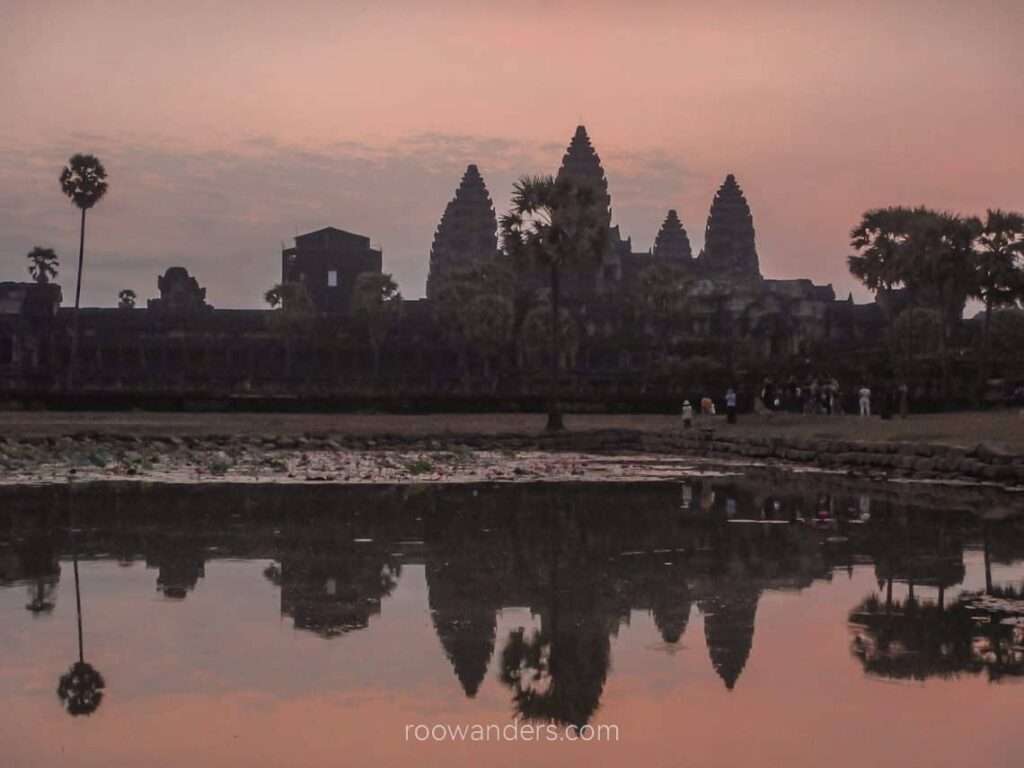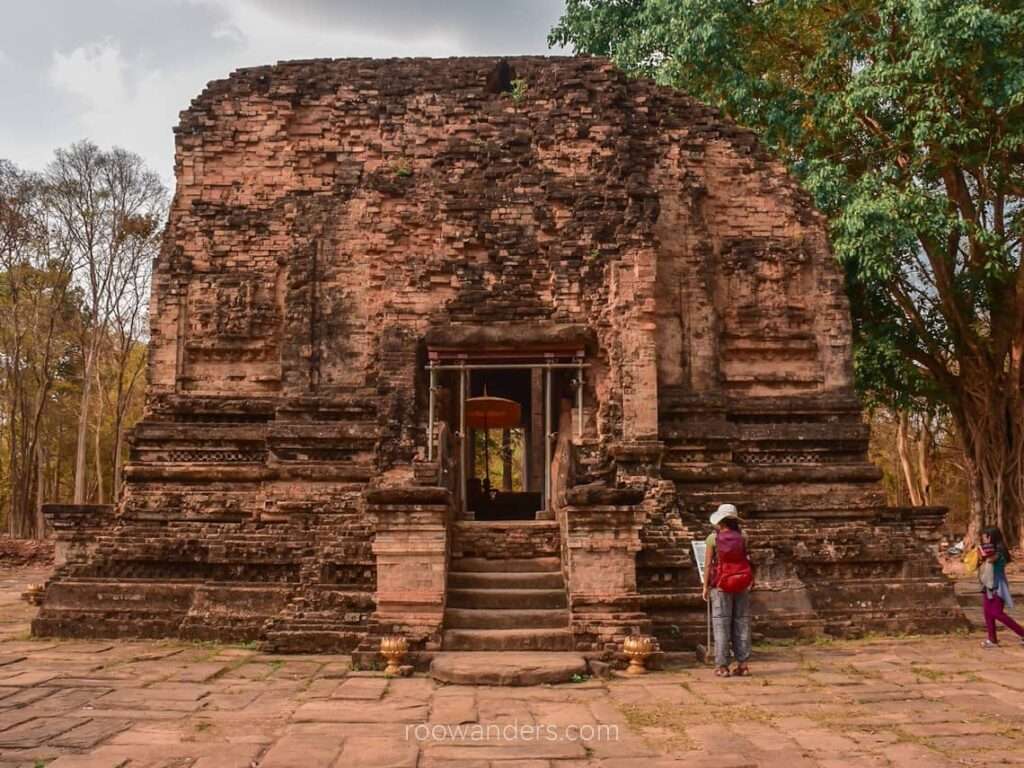
One Day in Ayutthaya
The former historical capital of Ayutthaya has been on my list for a long time ever since I visited Bangkok.
I love ruins and temple complexes like those in Siem Reap, Cambodia, and the stupas of Old Bagan, Myanmar. Anything ancient and beautiful and has survived the elements and passing of time is worth a visit. Are you not curious about the lives of the people then? How similar are their lives compared to other equally ancient civilizations and ours?
But when my trips to Bangkok were business-related, it was difficult to squeeze a day at least to explore this wonderland of Thai ruins.
Until now.
With that, here’s a post dedicated to my recent visit to Ayutthaya, what I’ve learnt, and how you could optimise your visit there!

I visited Ayutthaya one sweltering June day in 2024. This post contains affiliate links that cost nothing to you but support my blog! It may also be updated periodically. Cheers!
History of Ayutthaya
I’m curious about history, but not overly to the extent that I’d dedicate a website solely to Ayutthaya (these guys did a great job and can be your online guides).
This is what I’ve digested out of Thai history without going into too much detail.
Ayutthaya was the second capital of Thailand, or Siam as it was known back then. It was founded in 1350 and later became a mighty empire to reckon with after the end of the Sukhothai Kingdom in 1438.
The kingdom flourished from the 14th to the 18th century, becoming one of the largest global commerce and diplomatic hubs. Its success could be partly attributed to the island it resides on that is supported by three rivers and yet exists on a higher terrain, thus protecting the kingdom from seasonal flooding.
Ayutthaya was ransacked by the Burmese troops in 1767 who burned the city to the ground, leaving destruction in their wake. However, the Burmese troops had to split their forces between attacking Ayutthaya and defending against the Chinese front.
During this interlude, King Taksin founded the new kingdom in Thonburi on the west coast of Chao Phraya. His troops engaged in further battles with the Burmese. They succeeded in suppressing civil wars and reunited Siam, even incorporating Laos briefly under the new kingdom’s influence.
But the new kingdom did not last long. 14 years later, the king was deposed and the latest and current Rattanakosin Kingdom took over.
Best Time to Visit Ayutthaya
You could visit Ayutthaya anytime, but the best time is during Thailand’s winter, from November to February.
Summer, from April to July, is incredibly hot. I visited in June and a day out in the sun made me sick the next day from too much heat exposure! It was 35 °C in the afternoon but felt like 40 °C.
July to October is wet. You’d see lesser crowds due to the torrential rains. Remember to bring ponchos in addition to your umbrellas!

Getting to Ayutthaya from Bangkok
There are four ways to travel to Ayutthaya from Bangkok depending on your budget and time.
Train
If you’re a budget traveller, take the train from the main train station, which should still be Hua Lamphong for short journeys. Long-distance journeys are managed by the new train station Krung Thep Aphiwat Central Terminal which has trains journeying to Malaysia and Laos!
The journey takes an hour to two, and the cheapest ticket, a third-class ticket, costs THB 20 to 45, depending on the train.
Third-class tickets are unassigned with no air-con. Seats will be hard too.
I’ve boarded one to Phetchaburi, and it can be quite warm on a summer day.
Buy your tickets in advance without queuing at the train station from 12Go or Baolau.
Ayutthaya Train Station is next to the archaeological island, separated by the Pa Sak River.

Bus
Buses are generally faster than trains that stop frequently.
As Ayutthaya is north of Bangkok, you’d have to take the bus from the North Bus Terminal (Mo Chit) to the bus station in Ayutthaya.
However, Mo Chit is at Chatuchak – a distance from central Bangkok and nearby MRT stations.
Likewise the bus station in Ayutthaya – it’s about 6 km away from the island.
Tour
This was the option I went with!
Honestly, going by tour saves you time, is convenient, and comes with a guide.
I had only one day and wanted to see and learn as much as possible from Ayutthaya. The guide was knowledgeable about the various sites we’ve visited, and I thought the day was well-spent!
Private Car
If you’re travelling with a group or want better control of your time and places you’re going, rent a car or get a chauffeur.
Travelling Within Ayutthaya
Motor/ Scooter or Bicycles
If I were to travel with my partner who could ride a motor and we had more than a day to spare in Ayutthaya, we would have rented a motor and travelled around the temples.
But this also meant we’d miss out on the informative commentaries and anecdotes from a guide.
As I travelled with the guide in Ayutthaya, I saw people riding bicycles. Some accommodations loan bicycles for free. That summer afternoon in June felt scorching hot and Ayutthaya isn’t well-shaded – I would not want to attempt cycling under that kind of weather!
Check for the places to rent a motor or bicycle via Google Maps and compare their prices. From what I’ve seen, rental prices for a bicycle are around THB 100, and a motor is around THB 300. They will likely collect your passport or a high deposit fee as assurance.
Tuk-Tuk
Alternatively, go with one of the tuk-tuks waiting outside the train or bus station.
A tuk-tuk can hold up to 4 people and the driver probably has a standard route to follow. However, don’t expect him to be the guide.
The going rate for tuk-tuks from the train station is about THB 1000 – 1500 for the day. According to my research, the ride-hailing service Bolt has a presence in Ayutthaya – this will come in handy under the suppressive heat.
Places I Visited in Ayutthaya
For my day trip, our tour brought us to the summer palace Bang Pa-In, before we continued to Ayutthaya.
After visiting two other temples before the afternoon heat set in, we had a late lunch in a remote eatery, followed by three other sites.
The tour ended at Jodd’s Fair in central Bangkok – in time for an early dinner.
Bang Pa-In Palace
Our first stop was at the Royal Palace of Bang Pa-In, along the way to Ayutthaya, about 20 km south of the city.
The palace traces back to the 17th century when King Prasat Thong constructed the palace in remembrance of his mother. The king was the illegitimate son of another king who, in his youth, was shipwrecked on an island and saved by a local woman.

At least according to my guide, the first king – a prince then – wanted to continue the blissful life with the woman and his son but came to nought when he was eventually found by the royal guards.
When the first king died, he was succeeded by one of his legitimate sons. Then came wars, power struggles, etc and this next king was also deceased. Left with no legitimate successors, King Prasat Thong became the next king.
No one knows whether the palace was in use till the fall of Ayutthaya in 1767.
King Rama IV and his descendants then restored the palace in the late 1800s, which is what we mostly see now.
Bang Pa-In palace is open for us to visit, though the current royalty sometimes uses it as a residence or reception to welcome foreign delegates.
Buffer at least 1.5 hours for the visit. Tickets cost THB 100 each and the palace is open from 8 AM to 4 PM.
To make the trip more pleasant, four of us rented a golf cart for THB 500 per cart for an hour to drive through the compound. You could walk but the distance needed to reach each spot under the sweltering summer sun can be unbearably tiring.


Some interesting spots include the beautiful Thai-style pavilion in the middle of an outer pond, a lookout tower built in 1881, a Chinese-style two-storey mansion where one of the past kings liked to stay, and the residence that’s still being used to host royalties and VIPs.
Bang Pa-In Palace has a train station within walking distance from the site.
Wat Yai Chai Mongkhon
Unlike the other temples I’ve visited, Wat Yai Chai Mongkhon isn’t within the magical/ feng shui rich island of Ayutthaya.
Rather, it is located southeast, or about a 5-minute drive, from the train station.
Constructed during the reign of King U-Thong, Wat Yai Chai Mongkhon is known for its huge chedi/ stupa, which has ‘a wishing well’ within.

Aside from the large chedi, there are two other notable sites our guide highly recommended us to visit to ‘gather more good fortune’.
Her suggestion was for us to start from the main chedi, drop a coin and say a prayer while walking clockwise around the well, then head over to the main ordination hall to visit one of the most sacred Buddha images in Ayutthaya, before ending the trip at the giant reclining Buddha.




Take note that this temple complex is also an institution for practising monks living in elevated wooden houses at the fringes of the complex. These residences are not meant for visiting.
There are two car parks. I’m not sure if there’s a cost for parking, but our big tour bus was parked in the outer car park.
Tickets cost THB 20 each for Wat Yai Chai Mongkhon, and the temple is open for visiting from 8 AM to 5 PM.
Wat Phra Si Sanphet
Regarded as the symbol of Ayutthaya province, Wat Phra Si Sanphet was the holiest temple of the old Royal Palace before it was razed by the Burmese troops.

It was regarded as the inspiration behind Wat Phra Kaew, or the temple housing the Emerald Buddha in the Grand Palace in Bangkok.
Each of the three chedis houses the remains of a king, and the area was once a busy complex for spiritual ceremonies.
When the Burmese troops invaded in 1767, they sacked and burned the monastery to the ground, destroying smaller chedis, removing smaller Buddha images, and melting the gold off from bigger Buddha statues. Fortunately, the three chedis remained relatively intact.


One of the bronze cores of the bigger Buddha statues was later transported to Bangkok during the reign of King Rama I for restoration. Alas, the statue was too broken to be restored, so the king had it installed in a chedi of Wat Pho. This chedi stands with three other chedis and is covered in green tile mosaic.
Another 10 m tall Buddha was successfully restored and stands tall in the Eastern Vihara of Wat Pho as Phra Buddha Lokanat. You could tell that the style of this standing Buddha is unlike the styles of other Buddha images in Bangkok.


Tickets cost THB 50 each, and the temple is open from 8 AM to 5 PM.
Wat Mahathat
Situated somewhat in the central region of the island, Wat Mahathat was made famous amongst the visitors by the Buddha head surrounded by tree roots.

It was unknown when the temple complex was originally built, but research indicates that the remaining surviving buildings are Khmer style and go back to the Angkor period. Go Google its blueprint and you’ll see some similarities between Wat Mahathat and Angkor Wat, such as each having a main prang and four corner towers.
Unfortunately for Wat Mahathat, the 50m tall main prang had collapsed in 1904, so what’s left is a pile of ruins.

As with the other temple complexes, each king added a bit of building or restoration work according to his time. Then came the Burmese invasion, lootings and illegal excavations.
But no one seemed to really care about the ruins. Everyone had their attention glued to the star of the complex – the Buddha’s head surrounded by the roots of a Bodhi tree. Talk about the uncanny coincidence!
Our guide told us an anecdote behind the head, which may have been romanticised to suit the general audience.
It was said that the head originated from the main Buddha statue in the hall beside the Bodhi tree. A looter chopped off the head wanting to sell it to Westerners. However, he found his new loot too heavy to carry and buried it. Unbeknownst to him, the looter was later robbed and murdered on his journey. The head was then left unclaimed.
Years later, a Bodhi tree sprouted from the ruins. With it came the head of the Buddha. It was said that the head cannot be easily removed from the roots. The head and the tree have thus become one.
With the discovery of such a miraculous sight, feng shui masters/ advisors/ geomancers advised the king to restore the head of the main Buddha for the well-being of Bangkok – the current capital of the kingdom. This explains why only the Buddha where the head originates from has a restored head while the rest of the Buddha statues are left as they are – headless or destroyed.

Note: Buddhas are usually elevated to be higher than worshippers. In the case of this head in the roots, the Buddha’s head is lower. As such, when taking photos with the head, it is only polite to sit or kneel. A guard is on watch and would not hesitate to blow his whistle when he spots one not being respectful.
Tickets cost THB 50 each, and the temple complex is open from 8 AM to 5 PM.
Wat Lokaya Sutha
Located in the western part of the island, Wat Lokaya Sutha is on the west side of the old Royal Palace, or where Wat Phra Si Sanphet is located.

The giant reclining Buddhas are part of a temple complex that has been mostly razed during the Burmese attack. It is incredulous to think that a Buddha of such size remained while the temple and buildings it was related to have been reduced to their foundation level.
Wat Lokaya Sutha is free to visit. There is a small altar and some informational boards at the front of the Buddha.
Note: A reclining Buddha signifies the Buddha’s passing or entering nirvana. It is disrespectful to mimic this pose while having your photos taken with the reclining Buddha.
Wat Chaiwatthanaram
As with Wat Arun in Bangkok, Wat Chaiwatthanaram was made famous by the Thai soap drama Love Destiny. I saw visitors in Thai costumes in the complex, and rental shops lined up on the streets opposite the temple.
Wat Chaiwatthanaram isn’t located on the island. Located southwest of the island, the temple complex faces the Chao Phraya River and is opposite the Siriyala Palace.

Constructed in the early 17th century by King Prasat Thong – the same man who built Bang Pa-In palace, Wat Chaiwatthanaram was built in remembrance of his mom.
Some visitors commented that Wat Chaiwatthanaram resembles Angkor Wat with its main prang and a rectangular gallery of supporting corn-cob stupas. The central stupa is known as Mount Meru, which is the sacred mountain in Buddhism.

Random fun fact, I climbed Semeru, the tallest volcano in Java named after Mount Meru. Semeru is also called Mahameru, meaning ‘The Great Mountain’ in Sanskrit. So I supposed I’ve climbed Mount Meru in Java? 😜
Of all the temple complexes I visited that day, aside from Wat Yai Chai Mongkhon, Wat Chaiwatthanaram is one of the most restored temples I’ve visited. While most Buddha images still lack their heads, the stupas looked regal and not decrepit like those in Wat Mahathat or Phra Si Sanphet. It also had one or two stupas under scaffoldings and ongoing restoration. Is this the power of the soap drama?


Note: Aside from Thai costumes, you could enjoy popsicles designed like the temple in one of the cafes outside the complex. Makes for some Instagrammy shots.
Tickets cost THB 50 each, and the place is open from 8 AM to 5 PM. As with Wat Arun, it lights up beautifully at night.
Attire and Courtesy
Please dress sensibly and appropriately!
Bang Pa-In palace which I visited as the first stop of my tour is strict when it comes to attire. It’s not just the knees and shoulders that have to be covered. The bottoms have to reach the ankles!
And that’s how the locals became entrepreneurial and started selling elephant pants outside the ticketing booth.
Our guide told us an anecdote of one of her past clients who took off her shawl and revealed her shoulders and cleavage within the compound. It didn’t take long for a guard to evict her from the palace together with a hefty fine and removal of all the photos she had taken without the shawl. Extreme, I know! But that’s the dress code within the palace that she should have abided by.
As for the other temples, they are not as strict and knee-length bottoms are fine. Strapless, tank tops, wide necks, crop tops, miniskirts, shorts and low-waist pants are not allowed for ticketed temples. Then again, even if there are no such restrictions, dressing inappropriately leaves a bad taste to the locals and other practising Buddhists as a sign of disrespect to their religion and culture.
One critical note for men: Our guide mentioned that men who used long skirts or shawls to cover their legs may invite criticism from the monks. The older folks relate men wearing skirts to the Burmese attire of Longyi. Understandable, considering that Ayutthaya was razed to the ground by Burmese troops.
Accommodations
Aside from the main complexes I’ve visited, there are many more temples peppered around the island and city of Ayutthaya. There’s also a ticketed museum housing the relics and treasures excavated from the ruins of Ayutthaya.
For those looking to do an overnight slower-paced trip, or to catch the sunrise or sunset with the ruins as the backdrop, Ayutthaya city has several good accommodation options.
For budget backpackers, grab a bunk bed from Banchan Hostel, Early Bird Ayutthaya or the Zleepinezz Hostel. All three are centrally located on the island. Zleepinezz has a female dorm and a budget double, as with Banchan.

Couples or those looking for a beautiful place to rest should check out Baan Keang Chon which has a good view of Chao Phraya River while being close to the temples. Luang Chumni Village is another contender in case the former gets booked out. It features staying in a beautiful Thai-style mansion facing a quiet garden.


Those who want to meditate or enjoy peace could find tranquillity at Krodyle Mindfulness House.

Conclusion/ Rambles
I’m glad to have finally visited Ayutthaya – one of the easiest ancient capitals to visit in Southeast Asia.
Ironically, I did mine only after I visited Old Bagan in Myanmar – now not conducive for travelling – and the Angkor complex and two other UNESCO sites of Cambodia.
But having visited Angkor Wat, and seen the ruins of Sambor Prei Kuk of an earlier dynasty, I could find similarities between the temples in Ayutthaya and the Khmer Empire.

The stupas or chedis are also remotely similar to those I saw while trekking in the Tibetan-influenced part of Yunnan, China, and Ladakh, India.
Such ‘discovery’ and linking of dots always send a jot of satisfaction in me.
Since this is a section for rambles, I recalled a topic the guide shared during the trip. Burmese and Thais are Buddhists who build grand monasteries, temples and Buddha images for good merit. Why then do the Burmese troops ransack the empire?
Well, when you are a soldier and your king commands you to do so, you have to obey or risk death. So what if you share the same religion as the city you’re ransacking? History is replete with stories of war and the rise and fall of empires. Ayutthaya Kingdom led to the fall of the Khmer Empire. Later, the Konbaung dynasty, or the Third Burmese Empire conquered Ayutthaya. These three empires observe the same form of religion.
Anyhow, the topic above is too heavy and requires more stewing.
Nonetheless, it is this rise and fall of great empires and the ruins of what they left behind, plus the modern-day interpretations or romanticism that makes visiting archaeological sites such a fun learning journey for me.
More Pointers for a Great Trip
- Dress appropriately. Preferably in lightweight shirts and long pants.
- Bring enough hydration. Especially when travelling during summer. You could buy cold drinks outside the temples.
- Toilets are charged. Aside from Bang Pa-In Palace, all the temples I’ve visited charge for toilet visits.
- Bring enough cash. Cash is still king and these places do not accept card payments.
- Start your day early. To beat the punishing afternoon heat.
- Taking photos of the Buddha. Our guide encouraged us to take lots of photos with the Buddha images to increase our fortune. 😂






